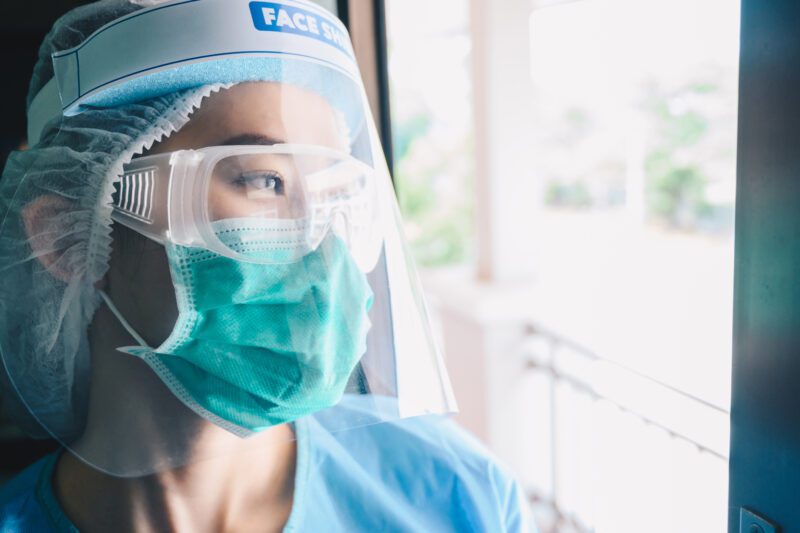
Share Post:
Medical uniforms are far more than just clothing – they are a vital part of a healthcare worker’s daily routine. Whether it’s scrubs, lab coats, or specialized protective gear, these uniforms serve multiple critical functions.
They provide hygiene and protection, establish professionalism, and contribute to patient safety and trust. With healthcare environments demanding high standards of cleanliness, functionality, and efficiency, the right uniforms make all the difference.
Table of Contents
ToggleHygiene and Infection Control
One of the most essential aspects of medical uniforms is their role in hygiene and infection control. In healthcare settings, workers are constantly exposed to bacteria, viruses, and other contaminants. High-quality medical uniforms, especially those designed with antimicrobial fabric, help reduce the risk of cross-contamination.
Proper uniform protocols, such as changing into fresh scrubs before and after shifts, minimize the spread of germs. Many hospitals enforce color-coded uniforms to designate different departments, ensuring that workers don’t inadvertently carry bacteria from one area to another. Additionally, regularly washed and sanitized uniforms reduce the likelihood of infections spreading to patients, colleagues, and even family members at home.

Professionalism and Identity
A well-designed uniform does more than protect – it also establishes professionalism. In hospitals, clinics, and emergency settings, a recognizable uniform helps patients identify their caregivers quickly. This is particularly important in fast-paced environments where clear distinctions between doctors, nurses, and technicians streamline communication and efficiency.
Beyond function, a well-kept uniform fosters a sense of pride and identity among healthcare workers. It reinforces the responsibility and dedication required in their roles. When medical staff look professional, it reassures patients and their families that they are in capable hands, creating an atmosphere of trust and credibility.
Comfort and Mobility
Healthcare workers spend long hours on their feet, performing physically demanding tasks. Ill-fitting or uncomfortable uniforms can lead to discomfort, restricted movement, and even musculoskeletal issues. High-quality medical uniforms are designed with comfort and mobility in mind, ensuring that professionals can move freely and efficiently while carrying out their duties.
Modern scrubs and lab coats – such as the high-quality adar scrubs – incorporate lightweight, breathable fabrics that allow for better air circulation. Features such as elastic waistbands, stretchable materials, and moisture-wicking technology help healthcare workers stay comfortable even during the longest shifts. When workers feel good in their uniforms, it positively impacts their performance and focus, ultimately benefiting patient care.

Psychological and Emotional Impact
The psychological impact of uniforms on both medical workers and patients is often underestimated. Studies have shown that the way healthcare professionals dress can influence patient perceptions and interactions. A clean, well-fitted uniform signals competence, while a worn-out or ill-maintained one may raise concerns about care quality.
For healthcare workers, putting on a uniform can serve as a mental transition into a professional mindset. It can help establish boundaries between work and personal life, providing a sense of preparedness and focus for the challenges ahead. In emotionally intense environments like emergency rooms or palliative care units, uniforms can also offer a sense of unity and belonging among team members.
Safety and Protective Features
In addition to hygiene and professionalism, medical uniforms often include safety-enhancing features. For example, some scrubs and lab coats are made with flame-resistant or fluid-repellent materials to protect against chemical spills or bloodborne pathogens.
Reinforced seams, multiple pockets, and ID badge holders enhance functionality, ensuring that healthcare workers have easy access to essential tools and identification at all times.
For professionals dealing with highly infectious diseases, personal protective equipment (PPE) such as gowns, gloves, and face shields are crucial. These specialized uniforms help create an additional barrier between workers and hazardous exposure, reducing risks to both themselves and their patients.

Uniform Regulations and Compliance
Many healthcare institutions have strict guidelines regarding medical uniforms to maintain a standard level of hygiene and professionalism. These regulations may include specific dress codes, laundering protocols, and fabric requirements to ensure safety and efficiency. Compliance with these standards is not just about appearance – it directly affects patient health outcomes and workplace safety.
Some hospitals and clinics require color-coded scrubs to distinguish between different roles, preventing confusion and enhancing workflow. Others may have policies on wearing name badges or limiting the use of accessories to avoid potential contamination risks. Adhering to these guidelines helps maintain consistency and accountability within the healthcare environment.
Economic and Environmental Considerations
Investing in high-quality medical uniforms is a cost-effective decision in the long run. Durable, well-made scrubs last longer, reducing the frequency of replacements and lowering expenses over time. Some institutions even provide uniform allowances or in-house laundering services to ensure that employees have access to fresh, hygienic attire without extra financial burden.
Additionally, the shift toward eco-friendly medical uniforms is gaining momentum. Sustainable fabrics, such as organic cotton or recycled polyester, reduce environmental impact while still providing comfort and durability. With the healthcare industry increasingly recognizing the importance of sustainability, adopting greener uniform options benefits both workers and the planet.

Conclusion
Medical uniforms are an essential aspect of healthcare work, far beyond their appearance. They protect against infection, promote professionalism, enhance comfort, and improve workplace efficiency.
For healthcare workers, the right uniform is not just a piece of clothing – it’s a crucial tool that supports their role in providing safe and effective patient care. As medical institutions continue to prioritize hygiene, safety, and sustainability, investing in high-quality uniforms remains a necessity rather than a choice.






